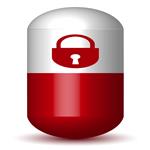If you are one of the millions of Americans who watched the Super Bowl, you likely saw public service announcements addressing prescription opioids and overdose. It’s a topic of vital concern for public health officials, considering that many teenagers and young adults begin using opioids they get from a friend or family member. Sometimes the pills are acquired right out of mom and dad’s medical cabinet.
Prescription opioid and heroin abuse is one of the most serious public health crisis this country has ever faced. Every day, nearly a hundred people succumb to an overdose. Naturally, efforts to reduce deaths have come from many Federal agencies and organizations. Reigning in opioid prescribing practices has been priority, with many attributing the opioid addiction epidemic to overprescribing.
Of course, “reigning in” does not mean the end of prescribing drugs, such as OxyContin or Percocet. It means, encouraging doctors to utilize alternative forms of pain management. Turning to opioids when nothing else proves effective. On top of that, prescribers have been advised to take advantage of prescription drug monitoring programs (PDMPs) to combat patient “doctor shopping.” That is, seeing multiple doctors to get multiple prescriptions for the same type of drugs.
On the other side of the prescription opioid problem in America, is the public; who have been entreated to safely dispose of unused medication and to keep prescription narcotics locked up. The latter of which is ever important in keeping potentially deadly drugs out of the hands of young people. You may think that medicine cabinet drug diversion is relatively rare, or that PSAs about keeping one’s prescriptions opioids locked up may be common sense, in the wake of epidemic raging throughout the country. It’s not!
In fact, one of the Super Bowl PSAs pointed out that while Americans are typically good about keeping their firearms locked up, teenagers are more likely to lose their life from an overdose than a bullet. Please take a moment to watch the PSA below:
If you are having trouble watching, please click here.
The PSA could not have been presented at a more opportune time, considering the new research out of Johns Hopkins Bloomberg School of Public Health. Researchers conducted a survey which found that 70 percent of prescription opioids in homes with children are not stored safely, according to a press release. The findings were published in the journal Pediatrics.
“Our work shines a light on the pervasiveness of unsafely stored opioids in American homes with children,” says study lead author Eileen McDonald, MS, faculty with the Johns Hopkins Center for Injury Research and Policy. “Unsafely stored opioids can contribute to accidental ingestions among younger children and pilfering by older children, especially high school students. We know that teens who use these drugs recreationally frequently get them from homes where they are easily accessible, increasing their risk for addiction and overdose.”
The end of the American opioid epidemic rests on more than just changing prescribing practices, it requires that the public do their part to ensure the safety of young people who are susceptible to both addiction and overdose. If you have prescription opioids in your household, please understand the gravity of this issue.


